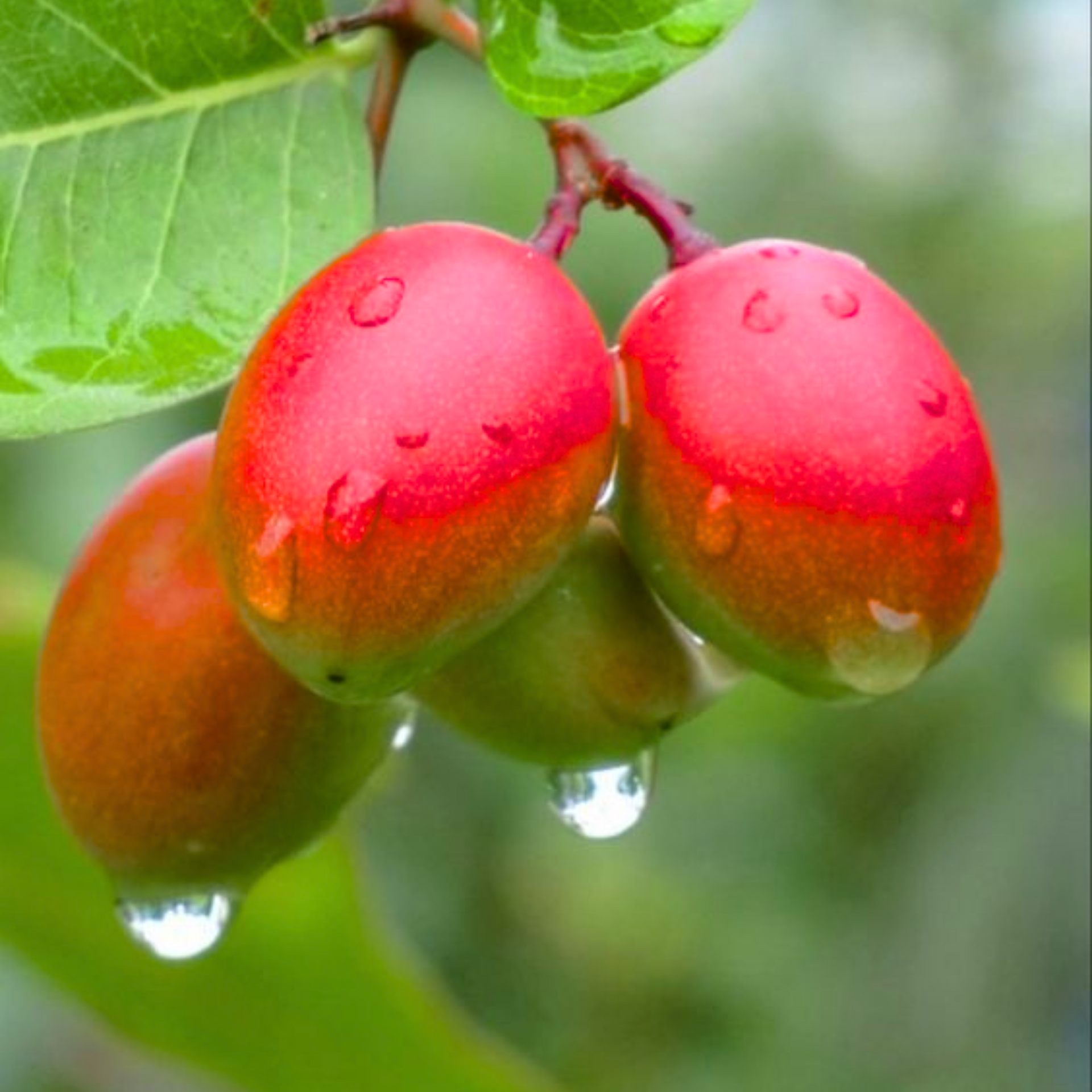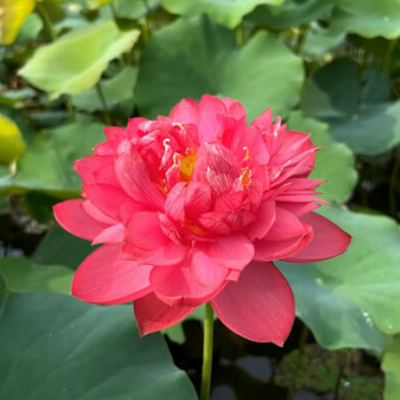


Karanda Live Plant karavda karamda fruits live plant
1 review
Rs. 349.00
Guaranteed Safe Checkout
The Green Paradise Karanda Plant:
Nature's Hidden Treasure
About Karanda Plant
In the world of botanical wonders, the Karanda plant stands as a true testament to nature's ingenuity. Also known by its scientific name, Carissa carandas, this unassuming shrub holds within its unassuming demeanor a plethora of benefits and uses that have been cherished by cultures across the globe for centuries. From its culinary applications to its medicinal potential, the Karanda plant continues to captivate the attention of botanists, chefs, and health enthusiasts alike.
A Brief Overview
- The Karanda plant, native to the Indian subcontinent, belongs to the Apocynaceae family.
- This family encompasses a wide range of flowering plants, many of which possess distinctive characteristics.
- The Karanda plant is no exception, boasting its unique attributes that set it apart from its botanical peers.
Physical Characteristics
- Standing at a modest height of about 3 to 5 feet, the Karanda plant's outward appearance might not immediately capture attention.
- Its lance-shaped leaves, paired with thorns along its branches, act as nature's defense mechanism.
- Delicate white flowers, often tinged with a hint of pink, blossom in clusters, releasing a gentle fragrance that adds to the plant's overall charm.
Culinary Applications
- One of the most intriguing aspects of the Karanda plant lies in its culinary versatility.
- The plant's small, berry-like fruits are rich in essential nutrients and possess a tangy flavor profile that makes them a favorite among culinary enthusiasts.
- These fruits are used in a variety of culinary creations, ranging from jams and chutneys to pickles and beverages.
- The unique blend of sweet and sour notes that the Karanda fruit offers adds a distinct character to any dish it graces.
Medicinal Value
- Traditional medicine systems have long revered the Karanda plant for its potential medicinal properties.
- Various parts of the plant, including the roots, leaves, and fruits, are utilized in different preparations to address an array of health concerns.
- The plant's extracts are believed to possess anti-inflammatory, antimicrobial, and even antioxidant properties.
- From aiding digestion to promoting skin health, the Karanda plant's contributions to holistic wellness are both diverse and noteworthy.
Cultural Significance
- Across different cultures and regions, the Karanda plant has etched its presence into the tapestry of traditions and practices.
- In Indian Ayurveda, it has been incorporated into remedies aimed at improving digestion and treating skin ailments.
- Moreover, its fruits are often used in religious rituals and festive celebrations, symbolizing auspiciousness and the cycle of life.
Sustainability and Growth
- The Karanda plant's undemanding nature and ability to thrive in various climatic conditions contribute to its sustainability.
- It is often found growing wild, and due to its hardy nature, it requires minimal intervention.
- This resilience makes it an ideal candidate for sustainable landscaping and reforestation efforts in regions facing ecological challenges.
Growing Karanda Plants: A Guide to Cultivating
Nature's Tangy Treasure
Karanda, scientifically known as Carissa carandas, is a charming and versatile plant that offers not only aesthetic appeal but also a bountiful harvest of delectably tangy fruits. Originating from the Indian subcontinent, this plant has found its way into gardens and landscapes around the world due to its adaptability and delicious fruit. Whether you're a seasoned gardener or a novice with a green thumb, cultivating a Karanda plant can be a rewarding endeavor. In this guide, we will delve into the art of growing Karanda plants, from selecting the right location to nurturing the plant to its fruitful maturity.
Choosing the Right Location
- Selecting the ideal location for your Karanda plant is crucial to its growth and productivity.
- These plants thrive in full sunlight, so find a spot in your garden that receives at least 6 to 8 hours of direct sunlight daily.
- While Karanda plants can tolerate various soil types, they prefer well-draining soil that's slightly acidic to neutral.
- If your soil is heavy and clayey, consider amending it with organic matter to improve drainage.
Propagation
- Karanda plants can be propagated through seeds or stem cuttings.
- Still, soak them in water for a many hours before planting, If you are starting from seeds.
- Plant the seeds in pots filled with a mixture of potting soil and sand.
- Keep the soil consistently moist until the seeds germinate, which usually takes about two to four weeks.
- For stem cuttings, take 6 to 8-inch cuttings from a healthy Karanda plant, remove the lower leaves, and plant them in a well-draining potting mix.
- Keep the soil wettish and place the slices in a shadowed area until they bed.
Planting and Care
- Once your Karanda plant is ready for transplanting, choose a location that meets the sunlight and soil requirements mentioned earlier.
- Space multiple plants at least 3 to 4 feet apart to allow for proper air circulation.
- Water the plants regularly, especially during the initial growing phase.
- Applying a subcaste of mulch around the base of the factory helps retain humidity and suppress weed growth.
Pruning and Training
- Pruning plays a vital role in shaping the growth of your Karanda plant.
- Regular pruning not only keeps the plant in a manageable size but also encourages new growth and better fruit production.
- Remove dead or diseased branches, and trim back excessive growth to maintain a compact shape.
- Training the plant through pruning can also improve sunlight penetration, leading to more fruit-bearing branches.
Fertilization
- Fertilize your Karanda plants during the growing season, which typically spans from spring to early fall.
- A balanced, slow-release fertilizer can provide the necessary nutrients for healthy growth and fruit development.
- Follow the manufacturer's recommendations for application rates, and avoid over-fertilizing, as this can lead to excessive foliage growth at the expense of fruit production.
Harvesting and Enjoying the Fruits
- Karanda plants usually start bearing fruit within a couple of years after planting.
- The fruits are small, round, and turn from green to a deep reddish-purple when ripe.
- Harvest the fruits precisely to avoid damaging the factory.
- Karanda fruits are renowned for their tangy flavor, and they can be enjoyed fresh, used in jams and jellies, or added to various culinary dishes for a unique twist.
Pest and Disease Management
- Keep a vigilant eye for common pests such as aphids, mealybugs, and scale insects.
- Regularly inspect the plant for any signs of infestation, and if detected, treat the affected areas with insecticidal soap or neem oil.
- Proper spacing and pruning can also help improve airflow and reduce the risk of fungal diseases.
P
Priya Sharma Fast delivery and great quality.
𝗥𝗲𝗹𝗮𝘁𝗲𝗱 𝗽𝗿𝗼𝗱𝘂𝗰𝘁𝘀
Flowering Plants
Green Paradise® Pink Lotus Tuber for Pond & Water Gardens – Healthy, Ready to Grow Aquatic Flower Plant Bulb
Green Paradise® Pink Lotus Tuber – Premium Aquatic Flower Plant ✨ Product Description: Bring the beauty of vibrant pink lotus blooms to your water garden or pond with the Green...
Rs. 549.00
Flowering Plants
Rare Heliconia Wagneriana Live Plant Heliconia psittacorum Live Plant
Introducing the Exquisite Heliconia Psittacorum Plant: A Tropical Marvel for Your Home Elevate your indoor and outdoor spaces with the captivating beauty of the Heliconia Psittacorum Plant. Renowned for its...
Rs. 499.00
Flowering Plants
Green Paradise Live-Heliconia Wagneriana Plant with Plastic Pot
Green Paradise Offer Beautiful Heliconia Wagneriana Plant About Heliconia Wagneriana Plant Heliconia wagneriana is a stunning and attractive tropical plant known for its unique and colorful inflorescence. Here's what I can...
Rs. 499.00
Flowering Plants
Heliconia rostrata Live Plant heliconia plant Heliconia psittacorum Live Plant
Introducing the Heliconia psittacorum Plant – Nature's Exotic Masterpiece! About Heliconia Psittacorum Plant: Elevate your garden to new heights with the breathtaking Heliconia psittacorum Plant, a true marvel of nature....
Rs. 499.00
Outdoor Plant
Green Paradise® Water Rose (Pistia) – Live Water Cabbage Aquatic Plant for Ponds, Aquariums & Water Gardens | Natural Oxygenating Floating Plant
Green Paradise® Water Rose (Aquatic Pistia) Plant Welcome to the lush world of Green Paradise® Water Rose (Aquatic Pistia)! Our aquatic plant is more than just a decorative addition to your...
Rs. 399.00
Seeds
Heliconia Plant Bulbs Heliconia bihai x marginata 'Rauliniana' 5 Bulbs-Green Paradise Live
Green Paradise Offers Heliconia bihai x Marginata Rhizomes (Pack of 5 Bulbs) About Heliconia Marginata Heliconia marginata, also known as the Red Bassy or Lobster Claw, is a stunning tropical plant...
Rs. 749.00
Flowering Plants
Heliconia bird of paradise Live healthy Plant-Green Paradise Live
Green Paradise Offers Beautiful Heliconia Bird Of Paradise Plant About Heliconia Bird Of Paradise Plant It seems like there might be a slight confusion in your question. Heliconia and Bird of...
Rs. 349.00
Flowering Plants
Heliconia Bihai Tropical Plants-Green Paradise Live
Green Paradise Offers Heliconia Bihai Tropical Plant About Heliconia Bihai Tropical Plant Heliconia bihai, commonly known as Lobster Claw or Hanging Heliconia, is a tropical plant belonging to the family...
Rs. 349.00




